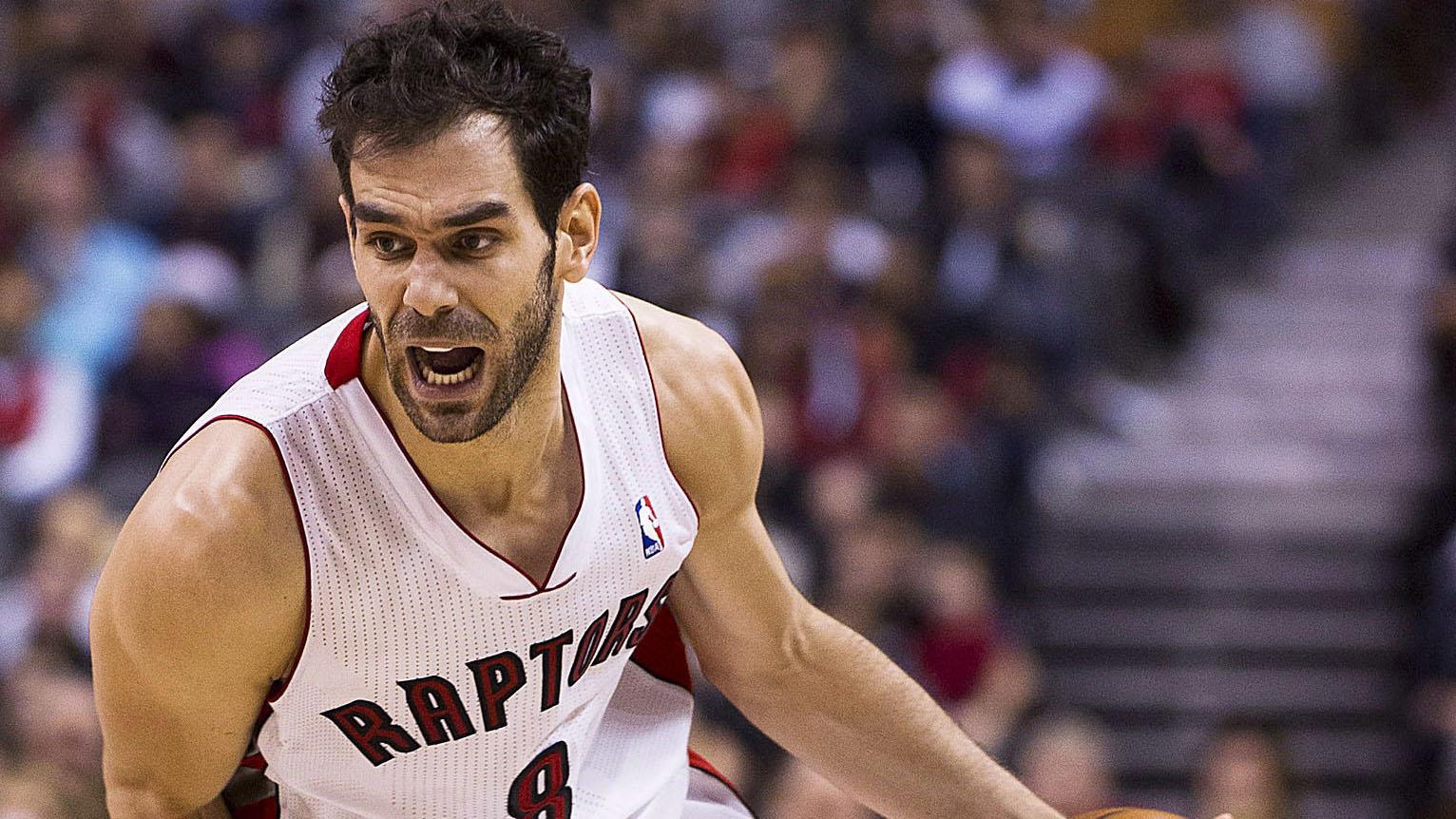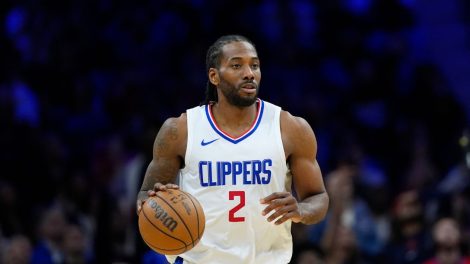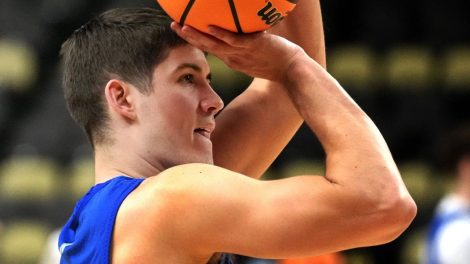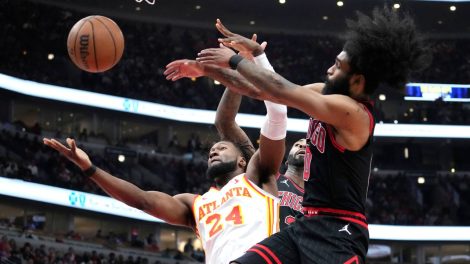Two men enter, one man leaves. It’s the rule of Thunderdome, where legacies are made, careers are lost, and only the strongest survive.
Jose Calderon, the once-shy kid from Villanueva de la Serena in Spain who has quietly established himself as one of the top point guards on the planet, has been there. Five times, to be exact, which is an awful lot for an eight-year career. The once-longest-tenured Raptor and franchise leader in assists has had to fend off coaches and teammates. But he wouldn’t be the same player without those battles. Each round has stoked his competitive flame, tested his professionalism and better prepared him for the next challenge. It hasn’t been easy. The Thunderdome never is.
Round One: Sam Mitchell, 2005-06
How do you torture a point guard? Ask Sam Mitchell.
By age 24, Calderon had established himself as one of Europe’s top point guards. The speedy Spaniard had won a silver medal at the FIBA European Championships with the national team in 2003, then led his club team to a Spanish League title and back-to-back Euroleague Final Four appearances, impressing the small but noticeable contingent of NBA scouts and front-office folk in attendance — including then-Raptors GM Rob Babcock. Calderon entered his name in the draft in 2005, but watched as 60 other names were called.
“I didn’t expect to be in the NBA,” Calderon says eight years and 522 games later, practically shrugging, his Andalusian accent worn down since then but still prevalent. “I was just going year by year, and I knew every year I was getting better, but I was never drafted. So I was kind of like, ‘Whatever.’ I was playing well, and I was happy [in Spain].”
Then he got a phone call from Babcock, and in August it was official: Calderon was North America-bound.
“I knew it would be difficult, but I was relaxed, thinking ‘OK, if this doesn’t happen and if I don’t make it, I’ll go back. Let’s see how it goes and figure it out later.'”
His first season was a constant struggle, enduring coach Mitchell’s mind games and tough-love initiation. All the slick Italian suits and designer glasses couldn’t hide the fact that Mitchell, in his second year at the helm of the Raptors, hadn’t changed much since his 17-year pro career. He was the kind of player whose impact on a given game wasn’t measured in the box score but in the litres of sweat he left on the floor, and he brought that mentality with him to coaching. Calderon learned the hard way: If you want to torture a point guard, take away his ball.
It didn’t matter what he did — an errant pass in garbage time, an open shot passed up, a missed rotation on defence — Calderon always found himself back on the bike. With sweat streaming down his clean-shaven face and through the mesh of his reversible black-and-white practice jersey, Calderon had no choice but to pedal on from the sidelines as yet another practice went on right in front of his eyes. This was the repercussion for making a mistake in Sam Mitchell’s Raptorland.
“Isn’t it supposed to be the opposite?” Calderon would ask Mitchell. “Shouldn’t I practise more?”
“No, you’re not practising today,” is all the coach offered.
The situation was a first for Calderon.
“It was weird; I didn’t know how to react,” he says earnestly. “I would think, ‘This must be what the NBA is like, so I’ll do it.'” A 1-15 record to start the ’05-06 season made it worse. Calderon wasn’t used to losing (the Raptors eventually finished 27-55; a No. 1 draft pick was their reward). “We lost more games in the first two weeks than I had lost in a whole season in Spain,” Calderon says.
But by the end of the season, Calderon had put together enough solid appearances off the bench to prove that he had, at the very least, NBA potential. More importantly, he won Mitchell’s respect. And he outlasted him; Mitchell was fired in 2008.
“It was an up-and-down relationship. He was hard on me, but we figured it out. It was good for me.”
Two men enter, one man leaves.
Round Two: T.J. Ford, 2006-08
In the summer between Calderon’s first and second seasons, Bryan Colangelo made his first big move as the new Raptors GM, trading forward Charlie Villanueva to the Milwaukee Bucks for T.J. Ford, the diminutive point guard widely considered the fastest man in the NBA. Just three years removed from being named the NCAA’s National Player of the Year at Texas, Ford was brought in to be a franchise cornerstone, the Raptors’ point guard of the present and future. Colangelo’s guy.
In 2006-07, Ford’s first year at the helm, the Raptors enjoyed their best season since the Vince Carter era and won their only division title in franchise history. Calderon fell into a comfortable role in tandem with Ford, averaging nine points and five assists in 21 minutes per game off the bench.
Then, less than two months into the 2007-08 season, Ford re-aggravated an old spinal injury, forcing him out of action indefinitely and leaving the starting job to Calderon. In 56 starts that season, Calderon averaged 13 points and 9.1 assists, while shooting 53 percent from the field, 45 percent from beyond the arc, and 91 percent from the line. (Only six other players in league history are members of the 50/40/90 club: Larry Bird, Mark Price, Reggie Miller, Dirk Nowitzki and Steve Nash.) With an improved jump shot and the ability to make plays while limiting turnovers, Calderon was forging a name for himself around the NBA.
“I started playing more comfortably. I felt confident and my teammates were confident in me,” he says. “Chris Bosh helped a lot… and he was ‘The Guy.’ When you’ve got The Guy on your side it makes it easier.”
When Ford finally returned, it was too late. Fans greeted his mistakes with choruses of “Jose! Jose! Jose!” while Calderon cemented himself as the Raptors’ floor leader.
Ford was traded to the Indiana Pacers before the ’08 draft and one month later, Calderon signed a five-year, $45-million extension.
Two men enter, one man leaves.
Round Three: Jarrett Jack and Jerryd Bayless, 2009-12
This is a good time to remind you that the Raptors have actually traded Calderon. In the summer of 2010, he was shipped to the Charlotte Bobcats for Boris Diaw and his expiring contract. In the year after Ford left Toronto, Calderon became a dual threat as a shooter and playmaker, a borderline all-star. That on a team characterized by turnover–17 players were shuttled in and out of the roster. And yet Colangelo signed Jarrett Jack in the summer of 2009 — a tough and capable point guard with a skill set not dissimilar to Calderon’s. (That Jack was a teammate of Chris Bosh’s at Georgia Tech was a major factor, considering Bosh was approaching the final year of his contract and the Raptors wanted to do everything in their power to get him to re-sign.)
After his first season as a full-time starter, Calderon suddenly found himself in another tandem situation. Not that he minded. As long as the Raptors won, he could talk himself into any role. But after a sub-.500 campaign and with a frustrated Bosh all but a certainty to bolt to free agency, Colangelo started from scratch. Nobody, not even Calderon, was safe. That’s when, at the last possible moment, the Charlotte deal was nixed by Bobcats owner Michael Jordan and Calderon “returned” to Toronto riding a sea of trade chatter that still hasn’t let up.
So, yet again, the veteran put his head down and went to work, content to let the chips fall where they may. And when you put together your best statistical season, as Calderon did in 2010-11, reaching double-digit assists in 25 games (14 more than the previous season), chances are those chips will land favourably.
Unable to earn enough minutes behind Calderon to justify his contract, Jack was traded to Portland for Jerryd Bayless. Though the debate did exist briefly (mainly on the Internet), Bayless was never in Calderon’s class during his season and a half in Toronto.
A restricted free agent this past summer, the Raptors let Bayless walk.
Three men enter, one man leaves.
Round Four: Kyle Lowry, 2012-13
Kyle Lowry was supposed to be different. Calderon wasn’t supposed to go into the Thunderdome against him and survive. When the turbulent young star fell out of favour in Houston, Colangelo capitalized on the opportunity to trade for a guy he thought would bring new energy to the roster.
In his first season under Dwane Casey, Calderon had impressed his new coach, who called him the Raptors’ Peyton Manning. But with a $10-million expiring contract and a point guard of Lowry’s talent on the roster, he started this season on the bench. If it didn’t seem certain heading into opening night, Lowry’s phenomenal first week in a Raptors uniform made a Calderon trade seem all but certain.
You know how it played out: Lowry went down with injuries — first his ankle, then his shoulder — and Calderon, as he had before, seized the opportunity. He took back the starting role and performed well enough –12.6 points and 9.6 assists in 26 starts this season — to justify keeping it. The Raptors are 13-14 when Calderon begins the game, just 2-13 with Lowry.
Two men enter, one man leaves.
The irony is that Colangelo had stumbled upon a killer combination — the steady guidance of Calderon and the shaky brilliance of Lowry offer Casey and the Raptors coaching staff two distinctly different weapons ready to be deployed. In the NBA, depth is king, and with the right pieces in place, whether a player starts the game on the bench or on the floor is mostly irrelevant. And Calderon knows it.
“Look,” he explains matter-of-factly, standing just a few feet from where he used to ride the dreaded exercise bike, “I just try to be professional. This is my team, and until somebody tells me different, I’m going to give everything I can. I’ve never had a problem with anybody. I have a great relationship with Kyle right now. We both just happen to play the same position. We can’t not be friends because the coach plays you more than me, or the other way around.”
Calderon has been to Thunderdome, and each time he’s walked out a little stronger, a little wiser, and always ready for what’s next.
“You learn that the only thing you can control is being professional and staying focused. This is the NBA. There are a lot of things that you can’t control.”
Less than a week after this story originally appeared (in Sportsnet magazine’s iPad edition) Calderon was traded to the Detroit Pistons as part of the Rudy Gay deal.
Sometimes you beat the Thunderdome, and sometimes the Thunderdome beats you, and you end up shoveling shit in the basement of Bartertown. Or Detroit.
Dave Zarum is an assistant editor at Sportsnet magazine. This story originally appeared in the magazine’s iPad edition about a week before the Calderon trade.









